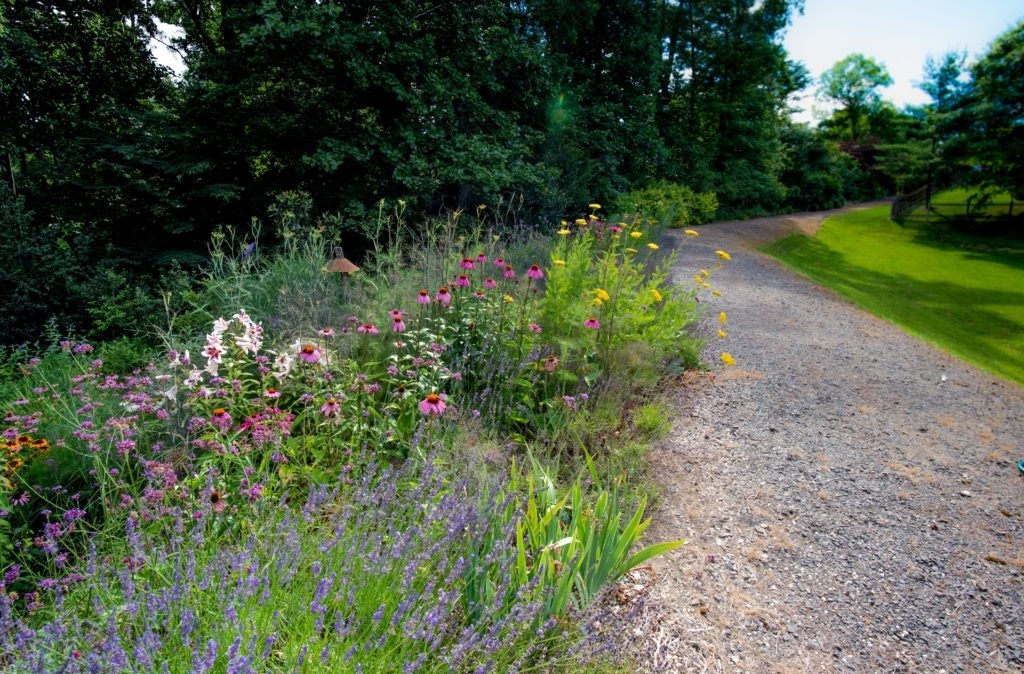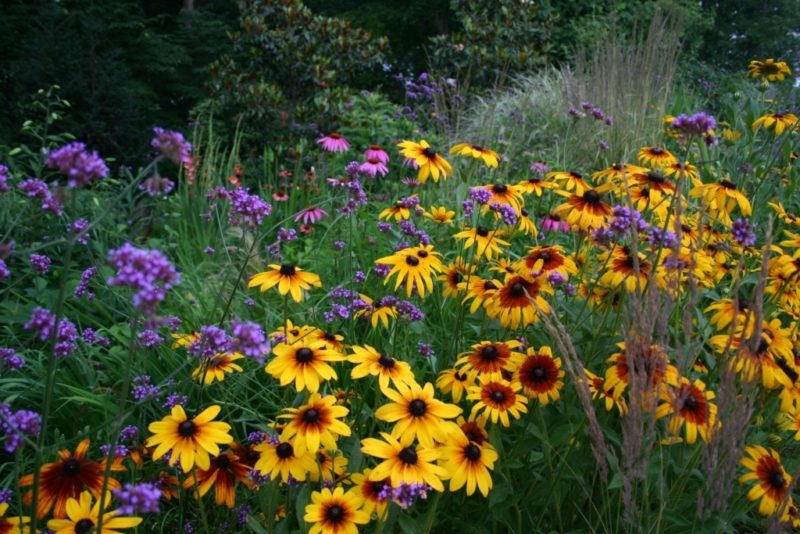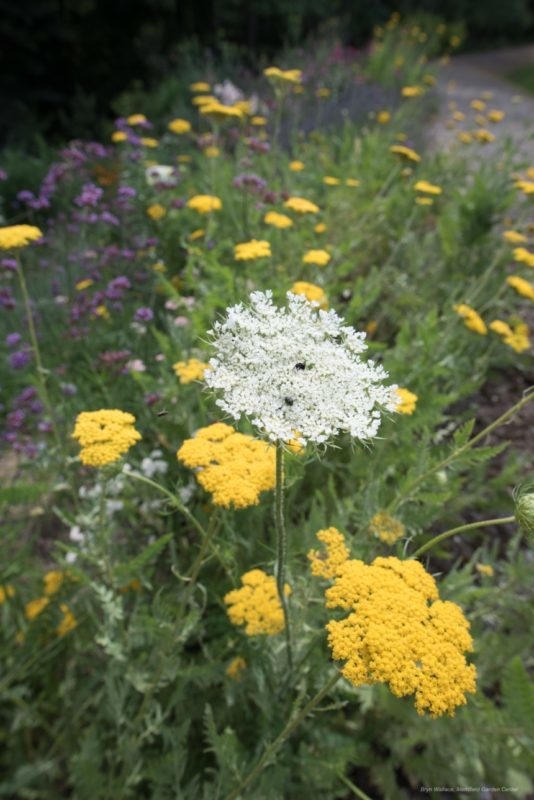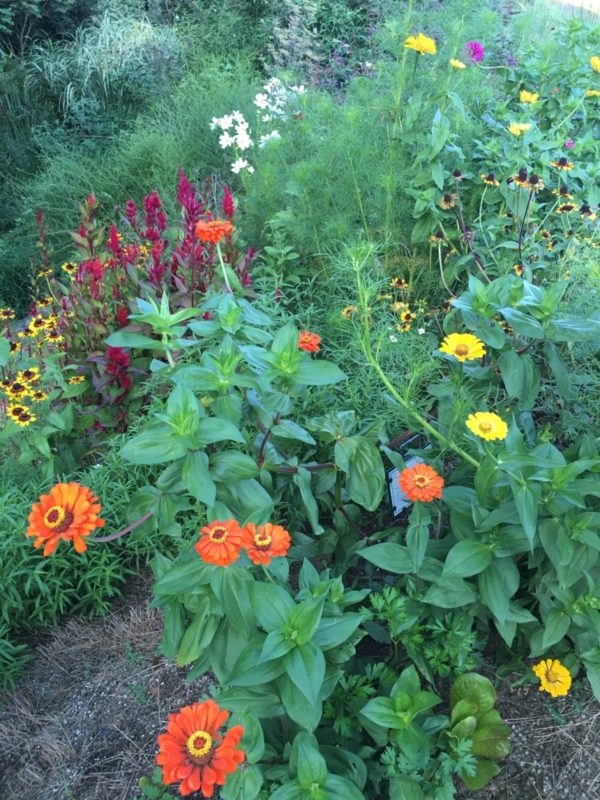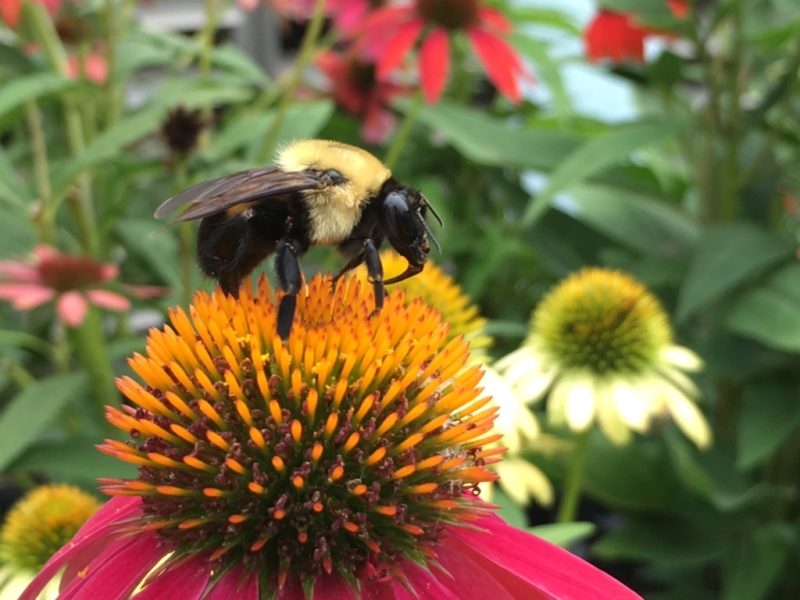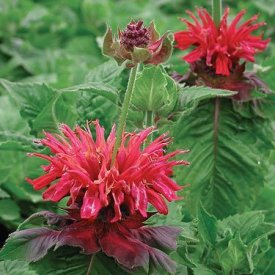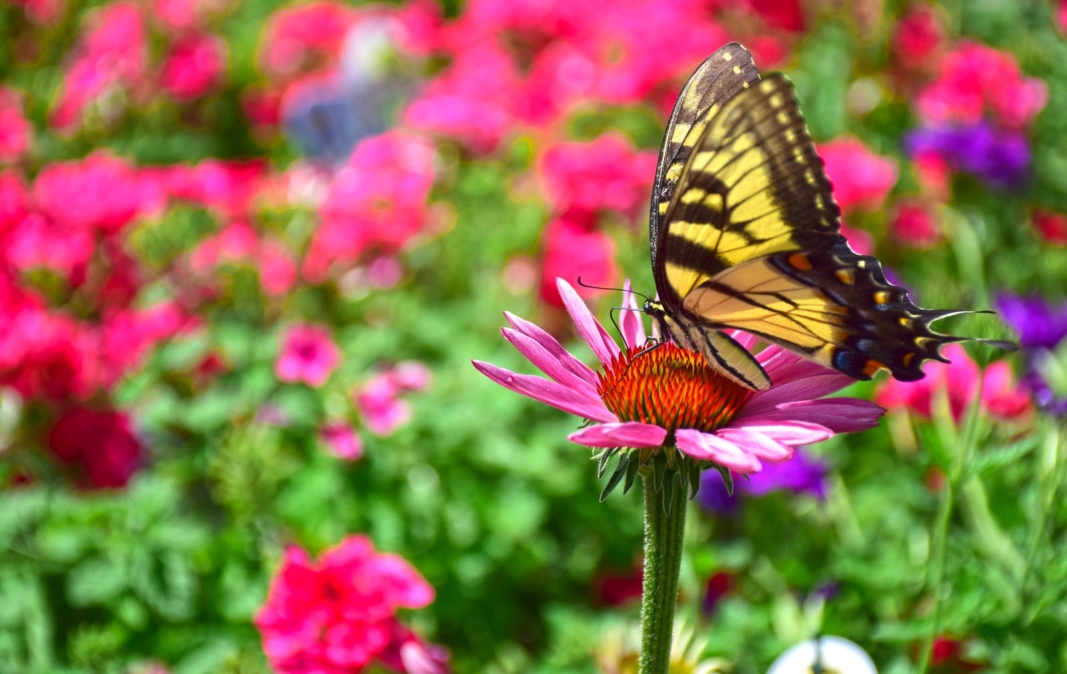Gardening for the Birds, Bees, and Butterflies
Who among us does not enjoy birds, bees and butterflies? By creating plantings that replace even small segments of these beautiful creatures’ diminishing habitats, we can contribute to their preservation. I personally had the opportunity to do this when a retention pond was built on the property bordering mine. The large slope between my garden and the retention pond receives 5-8 hours of sunshine daily, and is the perfect place for a sunny garden devoted to birds, bees and butterflies! Now that it is established, not only do the pollinators enjoy it – my family, friends and neighbors do as well!
Soil Preparation
I was determined to grow lavender at the top of my sloped butterfly garden, so I began my project by amending the top 3-4 ft. of the slope with course sand and perma-til and composted leaves to create good drainage. I mulch my lavender plants as well as the bearded German iris, asclepias and santolina with small gravel. All of these plants require very well-draining soil to thrive. To prepare the soil for the rest of my garden, I worked composted leaves into the clay soil to create better soil conditions for plants to grow.
Seeding and Reseeding Annuals and Biennials
Many hardy annuals and biennials contribute heavily to a pollinator garden. I plant, seed others each year and allow some of the hardiest to reseed themselves. For plants that I allow to reseed, I mulch only very lightly after those plants begin to grow in spring in any areas where I want them to reseed. To lend a helping hand to their growth, I spread additional seed in August and September. Most of these plants will appear as tiny seedlings, and bloom the next spring or summer. These plants can also be seeded in March or April, but they may not bloom the first season. My favorite plants to seed in late summer or early spring are:
- Bachelor’s Button
- Cleome
- Foxglove
- Larkspur
- Nigella
- Parsley
- Poppy
- Rudbeckia hirta
- Feverfew
- Verbena bonariensis
- Viola
For any seeds that cannot take the cold and frost, I direct seed after the danger of frost has passed and the soil has warmed. At this time, I also transplant any plants that I purchased, or started from seed indoors. Some of my favorite plants to seed after the danger of frost has passed are:
- Amaranth globe
- Calendula
- Celosia
- Cosmos
- Dill
- Zinnias
Seeds for the Birds
I remove spent flowers (deadheading) on some plants to encourage rebloom over the spring and summer, but as fall approaches I stop doing this in order to leave seeds for the birds through the winter. Providing food for the birds during this season when resources are scarce is vital to their health, and allows me to support our native bird population. While I clean up other areas of my garden for the winter, I do not give my bird, bee and butterfly garden it’s fall cleanup until February or March, just in time for spring. This leaves the garden looking a little messy through the winter months, but makes it a haven for wildlife by providing pollinator and seed plants over as long a period as possible. I personally find it quite pleasing to the eye!
My Favorite Plants for Pollinator Gardens
The plants I discussed here are only a small portion of plants that make an excellent addition to butterfly gardens!


